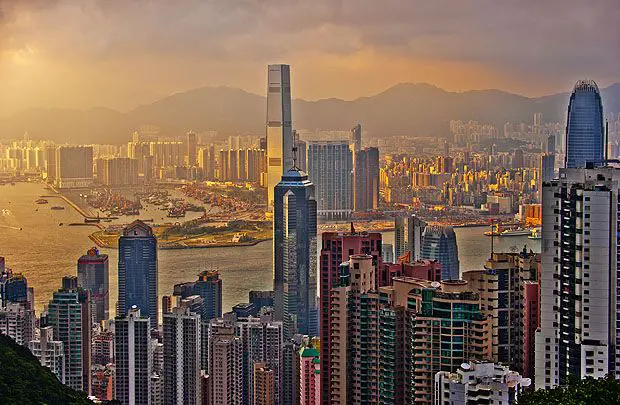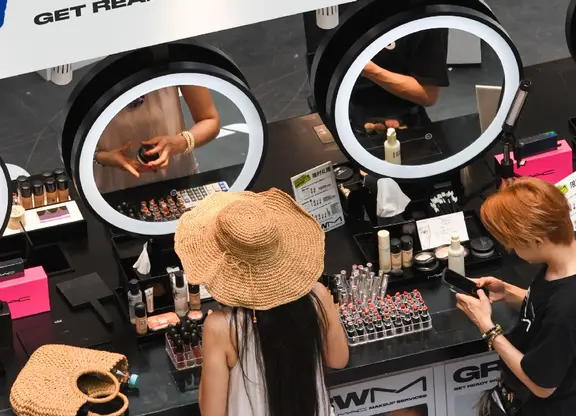(SOUTH CHINA MORNING POST) Travel photography used to mean packing several lenses and a sack full of accessories, but with advances in smartphone cameras most of us – even the professionals – are turning to the devices in our pockets.
The latest phone cameras boast incredibly high megapixel counts, along with more manual-camera-like features and settings.
Perhaps the ultimate example is the Microsoft Lumia 950 XL, which boasts an incredible 20 megapixel camera sensor, though close behind is the 12 megapixels of the iPhone 6S and Samsung Galaxy S7.
Selfie lovers – and there are plenty of travellers in that category – might want to get some face time with the new ZTE Axon Max, which has a 13-megapixel front-facing camera.
So how important are megapixels?
“In my opinion it’s not the megapixels which make the difference, it’s the lens that does the trick,” says Hong Kong-based freelance photographer and professional chef Franz J Estermann, who uses an iPhone 6S for his Hong Kong images on Twitter (@rivellajo).
“The majority of smartphone cameras have a fixed aperture to allow the maximum light through its very tiny lens,” he adds.
Extra resolution might be useful, but smartphones have traditionally struggled with other DSLR-like features. “Smartphones are in general completely automatic, but light and focus are still the main factors for a great shot, especially at night when it becomes a challenge with a smartphone,” says Estermann.
Smartphone sensors may not yet be as sensitive to low light as DSLR cameras, but night photography is now becoming possible.
“Nowadays, some smartphone cameras can set the shutter speed and ISO range, which can let us shoot different types of photo, such as using long exposure to capture the Milky Way and lightning,” says Hong Kong-based photographer Kelvin Yuen (www.facebook.com/kelvinlandscapes,www.instagram.com/kelvin_yuen).
Yuen currently uses a Samsung Note 3 for its large display, and for the ease of changing its battery, but he’s excited about the Samsung Galaxy S7. As well as being waterproof and dustproof, which is handy for travel, the S7 has a few things up its sleeve for landscape photography.
Praising it for rapid auto-focusing in low light, and for its large aperture (it goes down to f1.7), Yuen has been able to use it to take images of the night sky, something that until now has been the preserve of DSLR cameras.
“I can also can use manual focus, which can help me shoot the Milky Way,” he says, something he didn’t think was possible using a smartphone before using the Galaxy S7.
Other creative, long-exposure images like the “milky waterfall” effect, a legendary shot among nature photographers, are also now possible using any smartphone thanks to apps such as Slow Shutter! and LongExpo.
You do have to hold your phone steady – and a tripod or selfie stick helps – but even if you hold it in your hands, it’s possible to produce a very nice five-second exposure image of a smooth waterfall, fast-flowing stream, or the tide washing in over a beach.
Time-lapse and stop-motion sequences – perhaps of a sunset, a full moon rising or clouds sweeping across the sky – are also now possible to create using smartphone apps such as Lapse It, Timelapse Pro and OSnap!
There are other innovations that are exciting smartphone photographers, such as higher quality Ultra HD 4K video and Live Photos. Both are offered by the latest generation of iPhones – 6S, 6S Plus and even the small iPhone SE – as well as by Lumia phones and Samsung’s Galaxy phones.
Live Photos are essentially very short, two-second videos, but audio is also recorded. They’ve not really caught on for travel photos yet, but are ideal for capturing moments while travelling, and Facebook already supports them as uploads. Samsung’s S7 adds Live Photos for stretched panoramas, already a popular format for travel photos.
An older, but just as important, trend in smartphone photography is HDR (High Dynamic Range) mode, which basically takes a very light and a very dark image, and combines them to produce a photo that gets the best from both ends of the spectrum.
If your phone has got HDR, use it; the extra contrast and dynamism in your photos will astound you. But do remember that HDR means a second photo is saved on your phone, effectively halving your phone’s capacity (though you can deactivate this). The selfie-obsessed get an extra HDR option from the new HP Elite X3 phone, which includes a HDR Selfie cam.
However, a lot depends on a smartphone’s hardware, and it’s here that their fixed optics do bring restrictions.
“The smartphone camera has its limits,” says Estermann. “For example, if you zoom to get closer to the subject, you just decrease the pixels.”
It’s a trade-off, though the best advice is to zoom in regardless; it’s better to have a properly composed shot in lower quality, especially if you never seem to get around to editing and cropping your photos.
“A smartphone will never have the same quality of shots that a digital camera can, but with the correct light and shooting scene you are able to make top-quality shots,” adds Estermann.
That hasn’t stopped smartphone makers vying for title of “best glass”, with the Microsoft Lumia 950 XL using a Carl Zeiss lens and the upcoming Huawei P9 smartphone set to offer a Leica lens. The latter will bring another innovation to the world of smartphone photography – the dual camera system.
Dual rear cameras – which allow refocusing after shooting a photo, and much more depth of field by allowing in much more light – can already be found on the HTC One M8, Honor 6 Plus and the forthcoming LG G5.
The dual lens is a definite trend for late 2016 and 2017; expect the dual lens revolution to mature with the next iPhone and Samsung Galaxy phones, and probably on all forthcoming flagship handsets.
But whatever your optics, it’s good to go back to basics when relying on a smartphone for your travel photos. A useful tip is to take lots of differently composed shots of the same subject.
“You need to shoot pictures in different perspectives with a smartphone, as long distance and/or wide angle,” says Estermann, who advises shooting as many pictures as you can, then selecting the best ones.
“Always pay attention to your shots and try to analyse the good shots from the ones that did not came out satisfactorily,” he adds. “I suggest making some basic edits such as crop, colour and contrast adjustments.” It’s amazing what difference the latter can make, especially if you use Instagram to edit and share images.
Perhaps the most useful innovation in smartphone cameras is on the new Alcatel Idol 4S, which offers burst mode while in standby for instant photography.
“When you are shooting, you do not need to worry about the quality of photo, you just need to focus on how to capture the moment,” says Yuen.
“You cannot expect smartphone camera quality to be better than DSLR. The context inside the photo is more important than the quality of the photo.”
Sometimes travel photography is all about one thing – the moment – and with a raft of new innovations, the latest smartphones look set to give travel photographers an instant out-of-pocket experience.
 简体中文
简体中文






